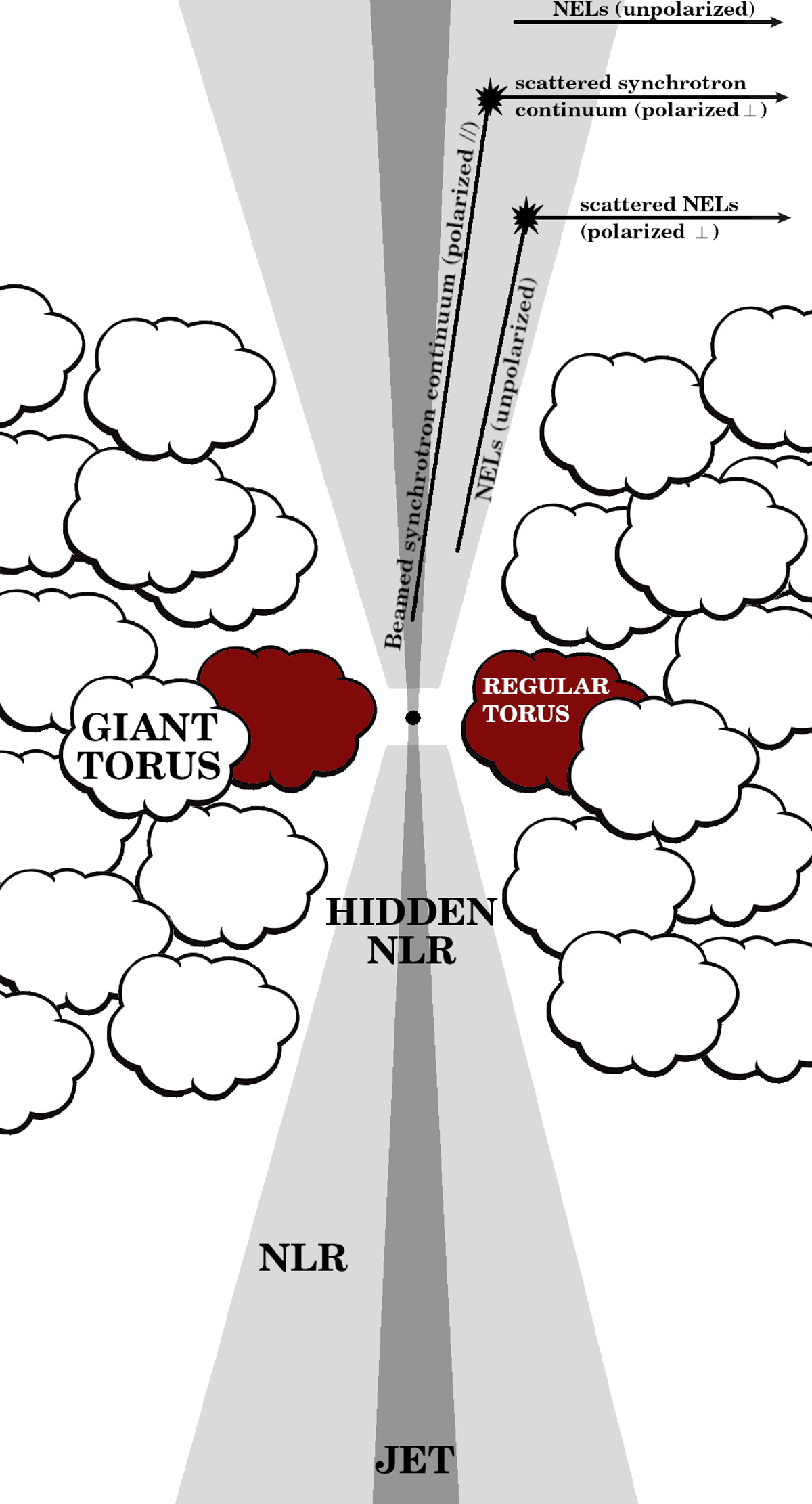Fig. 9.

Download original image
Schematic view of a hidden-NLR AGN. The black dot at the center represents the supermassive black hole, in the vicinity of which jets (in dark gray) are produced. The jet passes through the NLR (in light gray) and interacts with it along its path. The circumnuclear material, labeled as “torus” for brevity, is shown using clouds. In the case of a regular AGN, the typical optical size of the torus is represented in red, while in the case of a hidden-NLR AGN, the giant torus (in white, ≥10 pc) occupies a much larger volume, effectively hiding the innermost part of the NLR. We show on the figure how the unpolarized narrow emission lines (NELs) from the hidden NLR become polarized perpendicular to the jet radio axis due to scattering onto the NLR outermost, unobscured part. We also show how the beamed synchrotron continuum emission, likely polarized parallel to the jet axis at origin, is scattered in our line-of-sight and becomes perpendicular to the jet axis (although with a ∼10° difference due to the fact that the continuum was already polarized before this interaction). Finally, we show that regular, unpolarized, low-ionization NELs are still produced and observed in the outermost part of the NLR.
Current usage metrics show cumulative count of Article Views (full-text article views including HTML views, PDF and ePub downloads, according to the available data) and Abstracts Views on Vision4Press platform.
Data correspond to usage on the plateform after 2015. The current usage metrics is available 48-96 hours after online publication and is updated daily on week days.
Initial download of the metrics may take a while.


